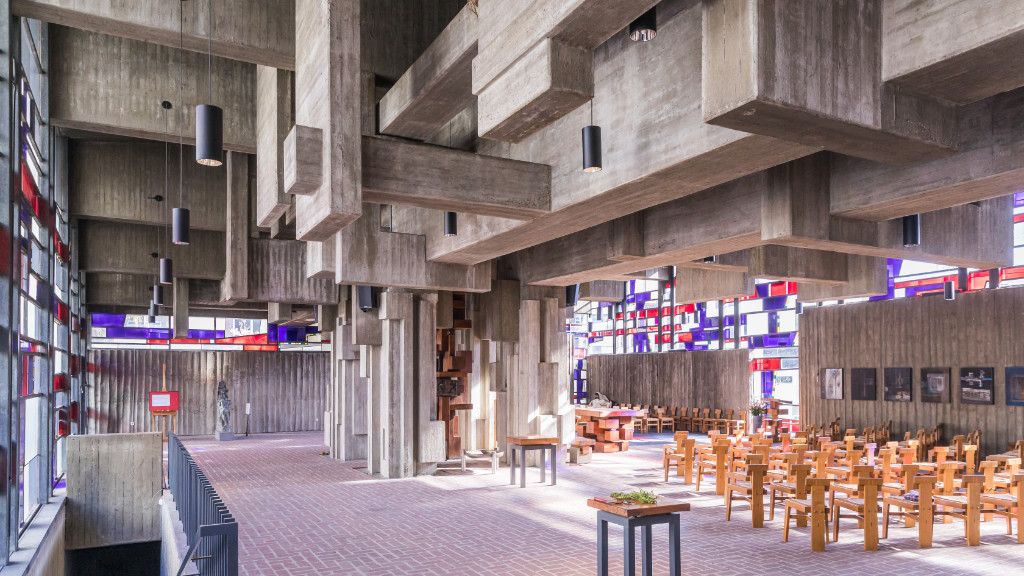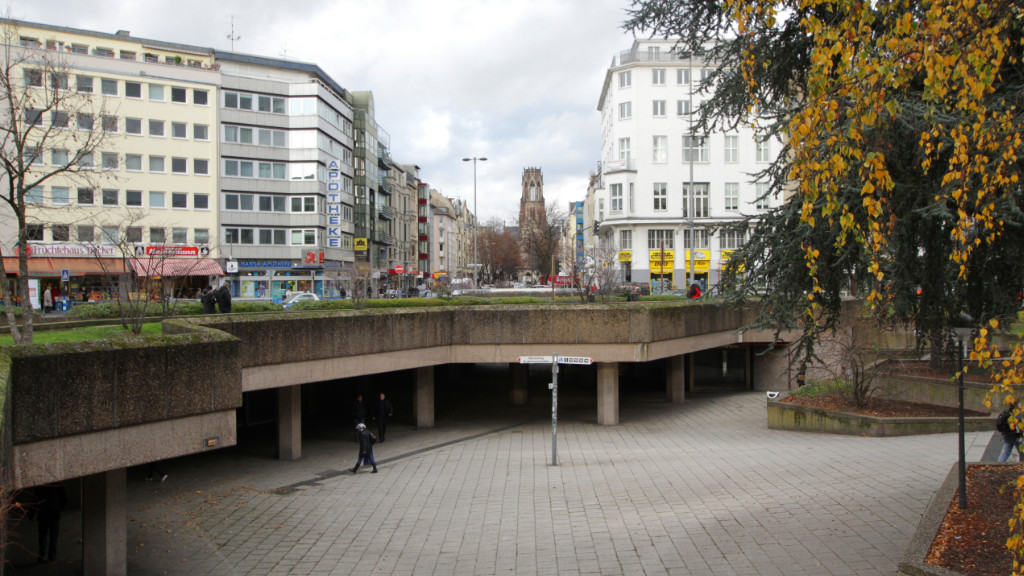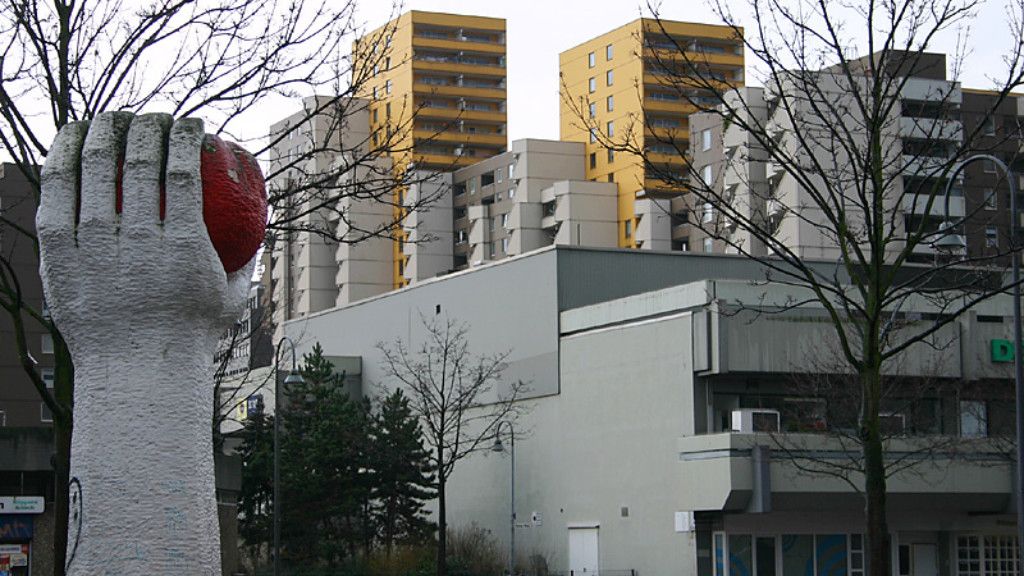Things that have been around for a while start to acquire a patina at some point. It’s not always nice to look at but it is authentic. That goes for numerous everyday items but equally for cities where generations of inhabitants – and architects – have left their mark. We took a look at five particularly, let’s say, distinctive buildings in Cologne that might not appeal to everyone but do tell us a lot about the city they’re located in and the people who live there.
Brutalism is a key element of Cologne’s architectural DNA
For several years now, expressionist architecture using exposed concrete has been a firm favourite with everyone looking to rediscover urban spaces. The brutalist aesthetic, on the other hand, saw its star fade as a scorned trend of the 1960s and 1970s. Today, though many people still find it difficult to appreciate these what they deem bland and cold exposed-concrete buildings with their clear and occasionally abstract lines, an increasing number admire the extravagant designs of the post-war period. And Cologne has plenty of examples.
Cologne University of Music and Dance

When Cologne‘s Hochschule für Musik und Tanz (University of Music and Dance) decided to commission a new main building in the 1960s, the idea was that the architecture should reflect the fine arts taught within its walls. This was the brief given to architects and designers who submitted bids to the regional government. The winning design, chosen in 1969, came from the recently founded architectural collective Bauturm. In the following eight years, as the project took shape, the collective became Werkgruppe 7 und Bauturm and they implemented the plans in two phases.
Winner of an architectural award before it was even completed
The result, still the standout feature on its street today, had already won the prestigious Kölner Architekturpreis award by the time the first construction phase ended. The building is a wild mix of architectural styles, with large panels of colour contrasting with concrete sections and overlapping geometric and abstract shapes and accents. The architecture of the finished building is a portrayal of rhythm, dancing to its own tune and beat. Only when all the individual elements are seen together do they provide a perfectly balanced image for the onlooker.
Cologne University and City Library

Out-of-the-ordinary collections call for out-of-the-ordinary architecture. That’s why the Cologne University and City Library ensemble ranks among the city’s best-known examples of outstanding brutalist architecture. Designed by Stuttgart architect Rolf Gutbrod, the complex, famed for its storeroom with its honeycomb exterior, was constructed between 1964 and 1967. The administrative department and reading room don’t quite measure up to the spectacular architectural design of the storeroom.
A building designed to impress
The storeroom’s unusual aesthetic was specifically intended to underline its importance as the part of the library that houses the largest media collection in Cologne’s home state of North Rhine-Westphalia. The collection comprises around 4.4 million media and a similar number of digital sources. The Gutbrod buildings and the surrounding landscape architecture were granted protected status in 2020.
Church of John XXIII

Cologne has a number of architecturally impactful holy buildings besides its cathedral. In particular, numerous notable church buildings were erected during the height of brutalism. One especially outstanding example is the Church of John XXIII (the church of Cologne’s university parish), which was built between 1968 and 1969. Located close to Cologne University in the city’s Sülz district, the now listed building is bursting with abstract shapes.
A concrete tree
Working from plans and designs drawn up by sculptor Josef Rikus, architect Heinz Buchmann created a church around the motif of a tree – with branches and roots made of concrete. Intertwined concrete elements can be found everywhere both inside and out and abstract shapes adorn both the interior and the windows designed by Will Thonett. The building was painstakingly renovated by Cologne architect firm 3pass Architekten in 2016.
A classic example of brutalism in Cologne: Ebertplatz

One of the most distinctive and most-discussed spaces in Cologne is, without doubt, Ebertplatz. Not only is this “square” a classic example of the brutalist architecture trend of the 1970s, it’s also right out of that era’s urban planning textbook. Architect Kurz Jatho, who worked for the city’s planning department at the time, created the design for this, the largest square in the Neustadt-Nord district of Cologne as part of the plans to build an underground train network.
Talk of a makeover has been going on for years
At the heart of Ebertplatz is a sunken space below street level with a design based on polygons. Wherever you look, the view is dominated by hexagonal honeycomb shapes. Since 1977, a “water kinetics sculpture” (dubbed the “nail fountain” by locals) by Wolfgang Göddertz has reigned in the centre of the space. Plans to give Ebertplatz a makeover have been a bone of contention in Cologne for many years.
Chorweiler

Chorweiler is still struggling with its image problem today. Photo: Elke Wetzig/Wikipedia
If we’re being brutally honest, Cologne’s Chorweiler neighbourhood hasn’t always had the best of reputations and was, at times, seen as a trouble spot. But it’s also true that a lot has been done in recent years to tackle that negative image. Numerous projects and programmes, actively supported by the local population, are helping to upgrade Chorweiler’s image. But its architecture continues to exude a special kind of old-fashioned charm as the perfect example of Germany’s pioneering urban planning in the country’s “economic miracle” era.
Exposed concrete galore
When construction work started in 1957, Chorweiler was set to be one of the largest satellite towns of its type in Germany. To reflect the wide range of architectural styles of the time, various architect firms were commissioned to put their own design stamp on “Chorweiler new town”. As a result, Chorweiler is full of different brutalist variants. Examples include the City-Center Chorweiler shopping centre and the iconic high-rise apartment buildings that dominate the district’s skyline. Cologne architect Gottfried Böhm was responsible for a number of the projects, of which one of the most unusual was doubtlessly the experimental-looking residential complex on Ripphahnschen Straße. Fans of naked concrete should make sure they don’t leave Cologne without seeing this impressive ensemble with its striking facades.

0 comments on “Brutally beautiful? Five opinion-dividing buildings in Cologne”